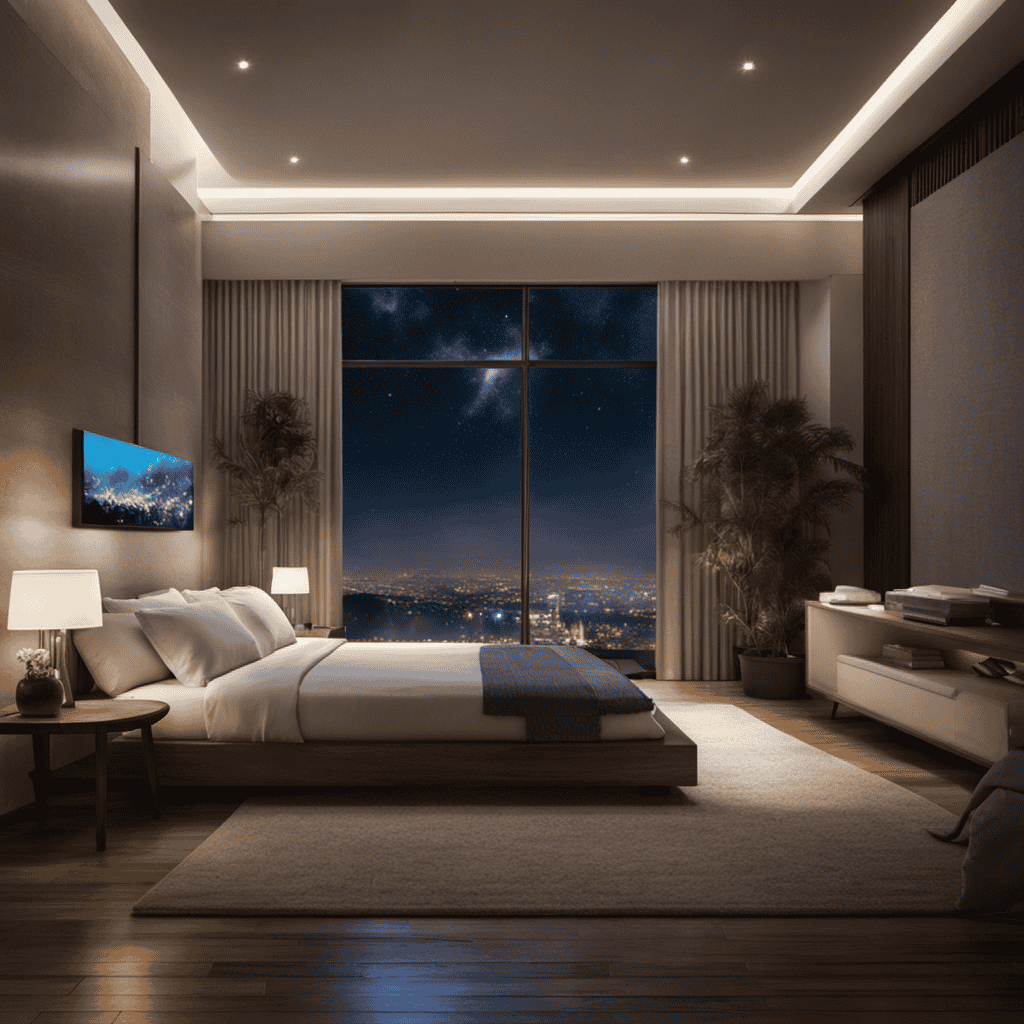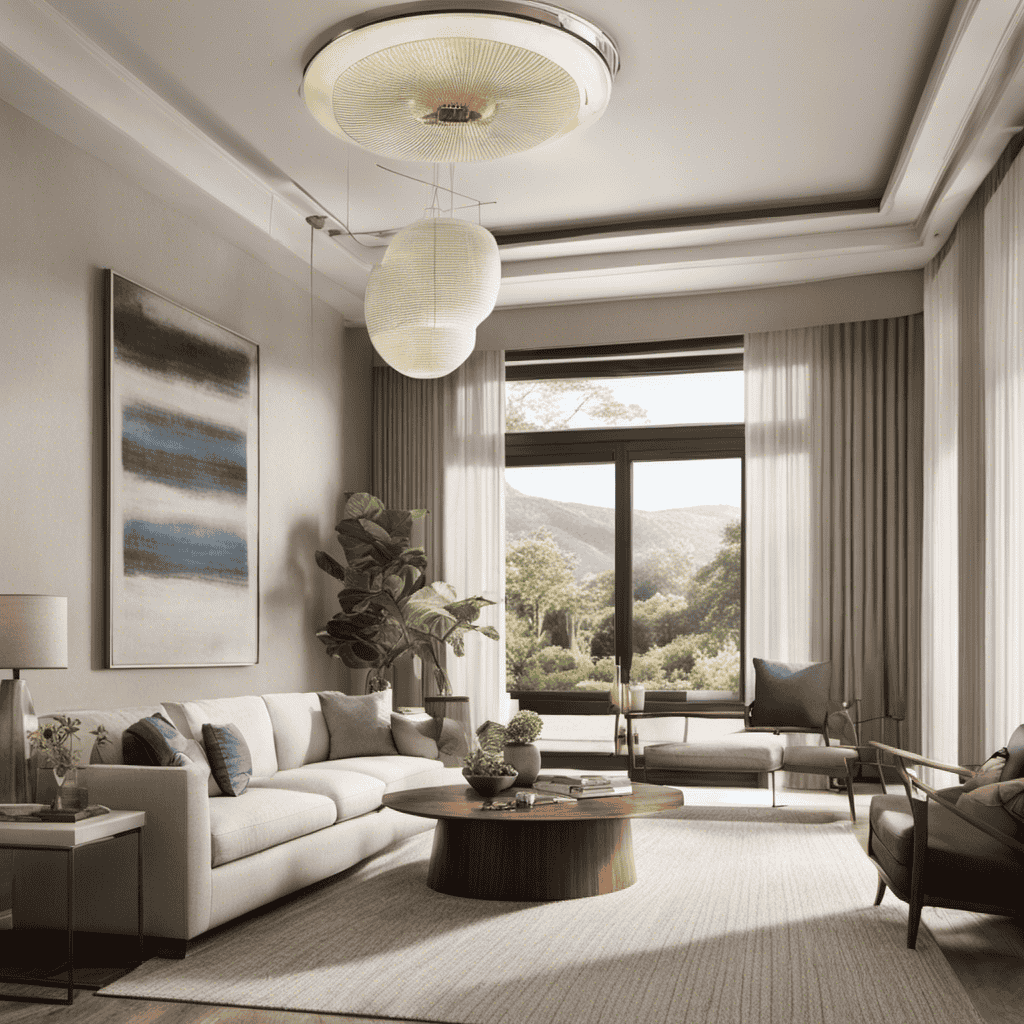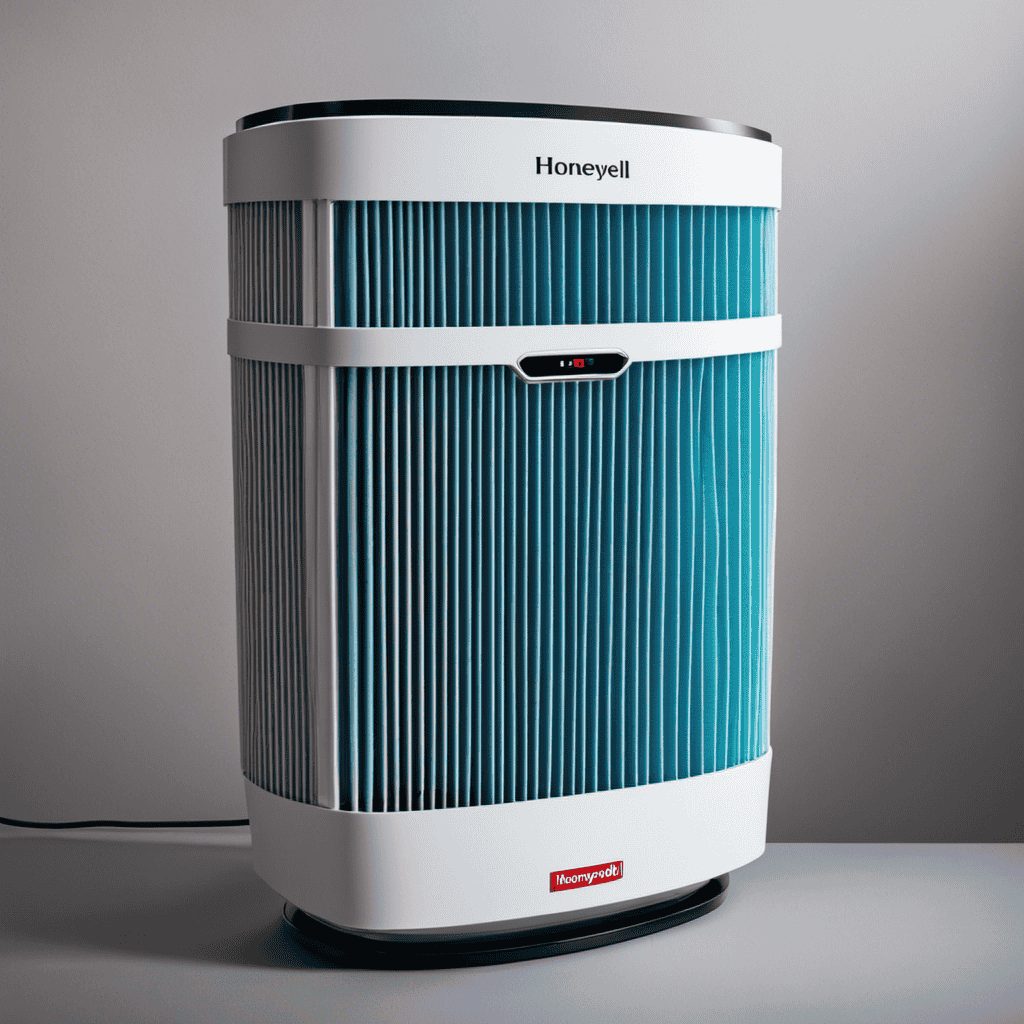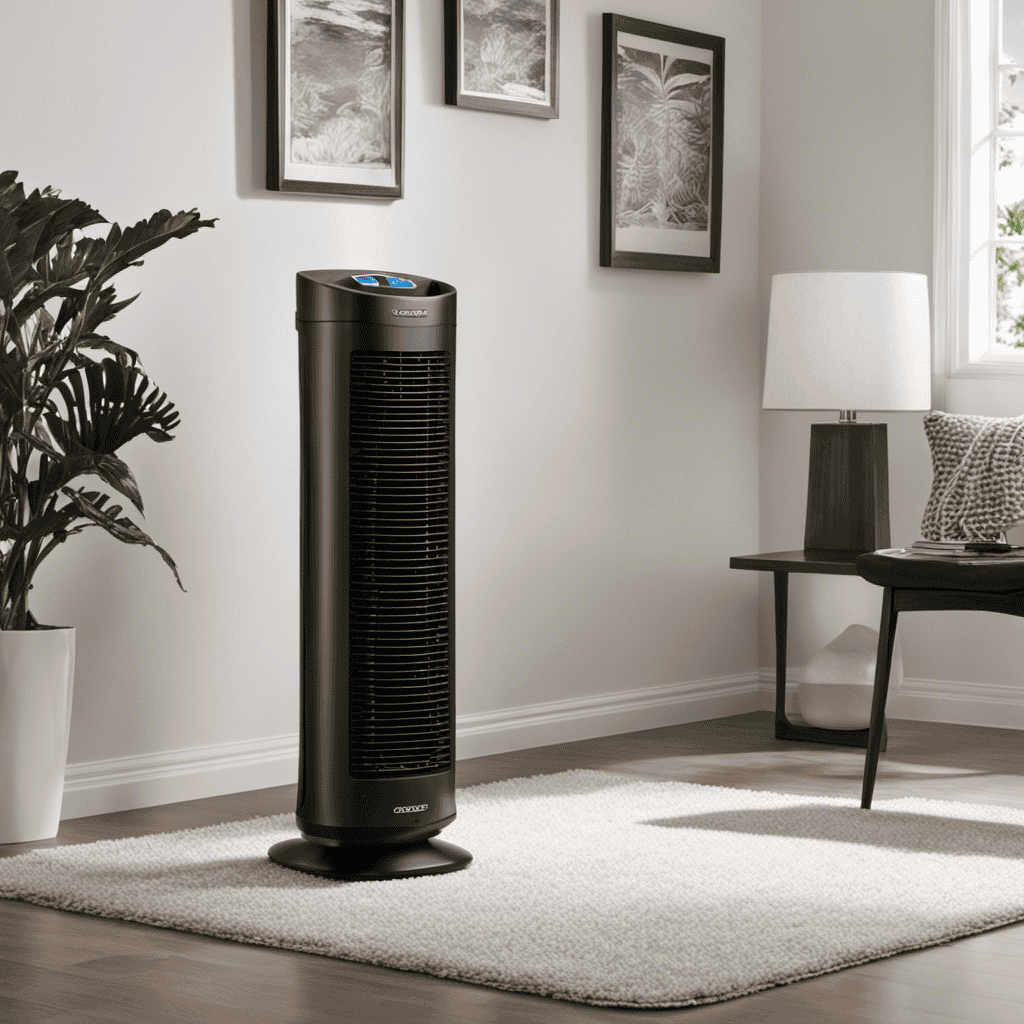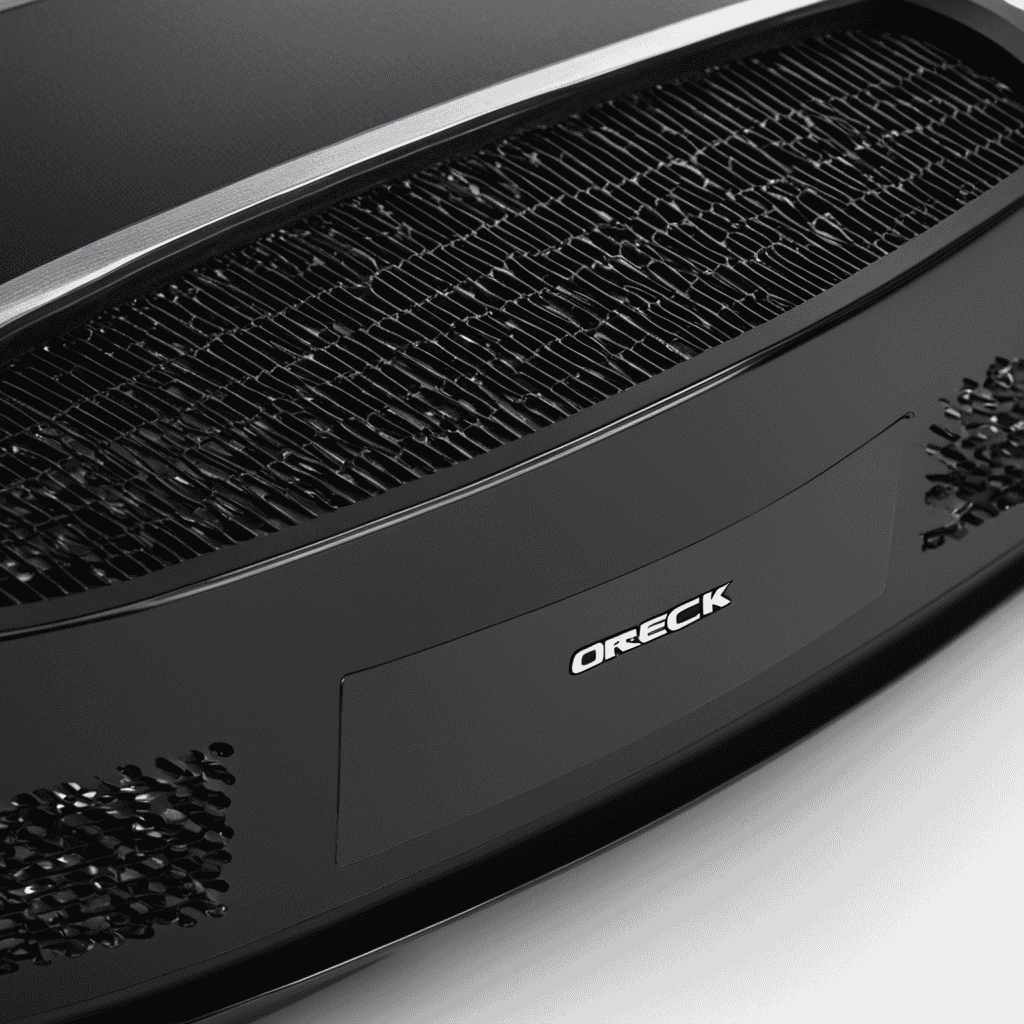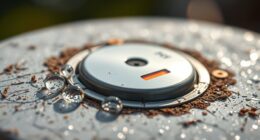Imagine waking up feeling refreshed and rejuvenated, ready to take on the day ahead. With an air purifier by your side, this dream can become a reality.
As someone who has struggled with sleep issues, I understand the frustration of tossing and turning all night. But fear not, because in this article, we will explore how an air purifier can revolutionize your sleep experience.
From improving indoor air quality to reducing allergens and irritants, we will uncover the incredible benefits that await you.
So, let’s dive in and discover the secret to a restful night’s sleep.
Key Takeaways
- Air purifiers improve indoor air quality, which positively impacts sleep patterns and sleep disorders.
- Air purifiers reduce allergens and irritants, creating a cleaner and healthier sleep environment.
- Air purifiers eliminate odors, creating an odor-free sleep environment that promotes relaxation.
- Air purifiers provide soothing white noise that masks other sounds for a more peaceful sleep.
The Impact of Air Quality on Sleep
The air quality in your bedroom can greatly affect how well you sleep. Studies have shown that pollution in the air can have a significant impact on sleep quality and can even contribute to the development of sleep disorders.
Poor air quality, especially when contaminated with pollutants such as particulate matter, volatile organic compounds (VOCs), and allergens, can lead to respiratory problems, allergies, and irritation of the airways. These issues can disrupt your sleep by causing coughing, wheezing, and difficulty breathing.
Furthermore, exposure to pollutants in the air has been linked to an increased risk of developing sleep disorders such as sleep apnea and insomnia. Therefore, it is important to address the issue of air pollution in your bedroom to ensure a good night’s sleep and maintain your overall well-being.
How Air Purifiers Improve Indoor Air Quality
To improve the quality of the air you breathe indoors, consider using an air purifier.
Air purifiers are designed to remove contaminants from the air, such as dust, pollen, pet dander, and mold spores. By eliminating these particles, air purifiers can significantly improve indoor air quality, which in turn can have a positive impact on your sleep.
Studies have shown that poor air quality can disrupt sleep patterns and contribute to sleep disorders. By reducing allergens and irritants in the air, air purifiers create a cleaner and healthier environment for sleep.
When the air is free from pollutants, you are less likely to experience nasal congestion, coughing, or sneezing, allowing for a more restful and uninterrupted sleep.
Transitioning into the next section, let’s explore how air purifiers can effectively reduce allergens and irritants.
Reducing Allergens and Irritants With an Air Purifier
By eliminating particles like dust, pollen, and pet dander, air purifiers can create a cleaner indoor environment. This reduction in pollutants can have a significant impact on improving sleep quality. When we sleep, our bodies go into a state of rest and repair, and it is essential to have clean air to support this process. Pollutants in the air can trigger allergies and respiratory issues, leading to discomfort and disrupted sleep. An air purifier removes these irritants from the air, creating a healthier and more conducive sleep environment. Studies have shown that cleaner air can lead to improved sleep quality, reduced snoring, and fewer instances of waking up during the night. Investing in an air purifier can be a valuable addition to your sleep routine and overall well-being.
| Benefit of Air Purifiers for Sleep Quality | ||
|---|---|---|
| 1. Reduces allergens and irritants in the air | 2. Creates a cleaner and healthier sleep environment | 3. Improves overall sleep quality |
| 4. Reduces snoring and instances of waking up during the night | 5. Supports the body’s rest and repair process |
Eliminating Odors for a More Restful Sleep
As someone who values a good night’s sleep, I have found that creating an odor-free environment in my bedroom promotes better sleep quality.
Research has shown that certain odors, such as those from pets or strong cleaning products, can disrupt sleep and even cause respiratory issues.
By using an air purifier to eliminate these odors, I have noticed a significant improvement in my sleep patterns and overall well-being.
Additionally, air purifiers not only remove odors but also reduce distractions caused by airborne irritants, such as dust, pollen, and mold spores, ensuring a more peaceful and restful sleep environment.
Odor-Free Environment Promotes Sleep
Creating an odor-free environment with an air purifier can help me sleep better.
Air purifiers are designed to remove airborne particles, such as dust, pollen, pet dander, and odors, from the air.
By eliminating unpleasant smells, an air purifier promotes relaxation and creates a sleep-inducing environment.
Odors, especially strong or unpleasant ones, can be distracting and disrupt the sleep cycle.
Research has shown that an odor-free environment can improve sleep quality and duration.
When the air is clean and fresh, it allows me to breathe easily, promoting a sense of calmness and tranquility.
This, in turn, helps me relax and fall asleep more easily.
Investing in an air purifier is a simple and effective way to ensure a peaceful and restful night’s sleep.
Air Purifiers Reduce Distractions
Investing in an air purifier eliminates distractions and allows for a more focused and productive environment. Here are four ways air purifiers can benefit you:
-
Improved air quality: Air purifiers use advanced air purification technology to remove harmful pollutants, allergens, and toxins from the air, ensuring you breathe in clean and fresh air.
-
Reduced allergens: Air purifiers capture and filter allergens such as dust mites, pet dander, and pollen, helping to alleviate allergies and respiratory issues.
-
Elimination of odors: Air purifiers effectively remove unpleasant odors from the environment, creating a more pleasant and comfortable space to work or relax in.
-
Enhanced mental clarity: Breathing in clean air can improve cognitive function and concentration, allowing you to stay focused on your tasks and be more productive.
Investing in an air purifier not only reduces distractions but also provides numerous health benefits. Improved air quality can have a significant impact on respiratory health, reducing the risk of allergies and respiratory infections.
Air Purifiers and Respiratory Health Benefits
Using an air purifier can help you breathe easier and potentially improve your sleep quality. Air purifiers are designed to remove pollutants and allergens from the air, which can contribute to better respiratory health and reduce the risk of sleep disorders. Research has shown that indoor air can be more polluted than outdoor air, and poor air quality can lead to respiratory issues such as asthma and allergies, which can disrupt sleep. By filtering out these pollutants, air purifiers create a cleaner and healthier environment, allowing you to breathe in clean air while you sleep. This can result in improved sleep quality, as you are less likely to experience breathing difficulties or wake up due to respiratory discomfort.
| Benefit | Explanation |
|---|---|
| Reduced Allergens | Air purifiers capture allergens such as pollen, dust mites, and pet dander, reducing the potential for allergic reactions during sleep. |
| Improved Air Quality | By removing pollutants and chemicals from the air, air purifiers create a healthier environment for breathing, leading to better sleep. |
| Reduced Asthma Triggers | Asthma triggers like mold spores and volatile organic compounds (VOCs) can be filtered out by air purifiers, reducing asthma symptoms. |
| Decreased Respiratory Issues | Cleaner air can help alleviate respiratory issues, such as coughing and sneezing, allowing for more peaceful and uninterrupted sleep. |
Choosing the Right Air Purifier for Better Sleep
When it comes to choosing the right air purifier for better sleep, there are two key points to consider: filter types and noise levels.
Filter types play a crucial role in removing allergens and pollutants from the air, allowing for a cleaner and healthier sleep environment.
Noise levels are also important, as a loud air purifier can disrupt sleep and cause discomfort.
Filter Types for Sleep
One way an air purifier can improve your sleep is by using HEPA filters. HEPA filters can capture and remove small particles like dust and pollen from the air. They are known for their high filter efficiency, removing up to 99.97% of particles as small as 0.3 microns. This ensures that the air you breathe while sleeping is clean and free from allergens that can disrupt your sleep.
Additionally, air purifiers with HEPA filters can also help reduce noise levels in your bedroom. The gentle hum of the purifier can provide a soothing white noise that masks other sounds and promotes a more peaceful sleep environment.
Noise Levels Considerations
The gentle hum of the purifier can provide a soothing white noise that masks other sounds and promotes a more peaceful sleep environment, making it easier to drift off to sleep. Noise cancellation is an important consideration when choosing an air purifier for your sleep environment. A noisy purifier can disrupt your sleep and defeat the purpose of creating a calm atmosphere. To ensure a restful night’s sleep, it is essential to select an air purifier with low noise levels. Below is a table comparing the noise levels of different air purifiers:
| Air Purifier Model | Noise Level (dB) |
|---|---|
| Model A | 30 dB |
| Model B | 35 dB |
| Model C | 25 dB |
| Model D | 40 dB |
| Model E | 28 dB |
As you can see, Model C has the lowest noise level at 25 dB, making it the ideal choice for a quiet sleep environment.
Frequently Asked Questions
Can an Air Purifier Help Reduce Snoring?
An air purifier can help reduce snoring by improving air quality and reducing allergens like dust mites. It filters out particles that can irritate the airways, potentially leading to a decrease in snoring.
Are Air Purifiers Effective in Reducing Pet Dander and Pet Allergies?
Air purifiers are incredibly effective in reducing pet dander and pet allergies. I’ve experienced significant relief since using one. It’s amazing how these devices improve air quality and make it easier to breathe.
How Long Does It Take for an Air Purifier to Make a Noticeable Difference in Air Quality?
Air purifier maintenance is essential for optimal performance. Regularly clean or replace filters to ensure effective air cleaning. Using an air purifier in the bedroom can benefit sleep by reducing allergens and improving air quality.
Can an Air Purifier Help With Sleep Apnea or Other Sleep-Related Breathing Disorders?
Using an air purifier for sleep apnea treatment has numerous benefits. It helps remove airborne allergens and pollutants, creating a cleaner breathing environment. This can lead to improved sleep quality and reduced symptoms.
Are Air Purifiers Noisy and Will They Disturb My Sleep?
Air purifiers can help improve sleep by reducing airborne allergens and pollutants. Some models are designed to be quiet, minimizing sleep disturbances. It’s important to choose a purifier with a noise level that won’t disrupt your sleep.
Conclusion
In conclusion, having an air purifier in my bedroom has been a game-changer for my sleep quality.
It’s like having a breath of fresh air, both literally and figuratively.
With improved indoor air quality, thanks to the air purifier, I can finally enjoy a peaceful and undisturbed sleep.
No more waking up with a stuffy nose or irritated throat.
The air purifier has truly transformed my sleep environment into a serene oasis, allowing me to wake up feeling refreshed and rejuvenated.
